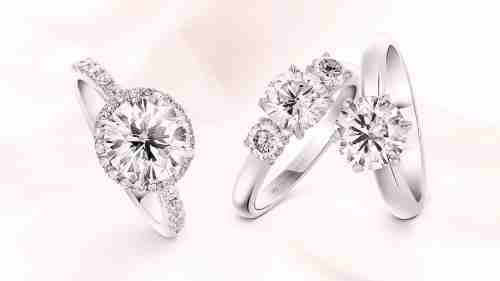Choosing the right diamond engagement ring can be a pain. However, if you keep a few simple guidelines in mind, finding the perfect sparkler will be much easier.
First, you’ll need to decide what type of diamond you want. There are many different shapes and cuts of diamonds.
Carat Weight
Carat weight is one of the four Cs of diamond grading (cut, color, clarity and carat), and it’s a major consideration when choosing an engagement ring. It’s essential to consider your budget, style preferences and lifestyle when selecting a ring with a diamond of a specific carat size.
In general, larger diamonds are more expensive than smaller ones, which can vary widely depending on where you live and your preferences. It also depends on the setting you choose for your ring, which can affect how large or small a diamond appears on the finger.
If you want to save money on your ring, you can still find sparkly and beautiful diamonds even when they’re slightly larger than their round counterparts. For example, fancy shapes can be 20-40% cheaper than rounds at the same carat weight, and many of these cuts are just as sparkly as a round diamond.
When choosing diamond engagement rings, the most crucial factor is your partner’s taste and style. She’ll wear her ring for the rest of her life, so you want it to reflect her unique personality and style.
Shape
The shape of a diamond can make all the difference in an engagement ring. It can tell a story, symbolize an important moment in your relationship or be just a beautiful piece of jewelry.
A round diamond is famous for its universally flattering shape, which can be matched with many settings and side stones. It’s also a timeless style that can stand the test of time.
Choose a heart-shaped diamond if you’re looking for a unique, bold stone to stand out from the crowd. This classic-shaped diamond has a long history as one of the most popular shapes in jewelry and is a symbol of love.
Whether you’re searching for a classic solitaire or a trendy accessory, cushion-cut diamonds are an elegant option for any setting. They’re known for their rounded corners and fiery facets, creating a stunning kaleidoscope of color.
A radiant cut diamond can be confusing for inexperienced ring buyers, but it’s a perfect mix of the princess and emerald cuts to bring out the brilliance in your center stone. Radiant diamonds can be set in several styles, including halo rings and vintage-inspired designs.
Metal
Choosing the right diamond engagement ring is a crucial decision representing the love and commitment you share with your loved one. While the diamond is a main draw, the metal band surrounding it is vital in ensuring your ring’s beauty and durability.
Whether you’re looking for a simple and classic design or something more elaborate, your ring’s metal can make all the difference. A few standard options include gold, silver and platinum.
If you’re going for a colored diamond, choose a metal highlighting the stone’s color. For example, yellow gold will accentuate the yellow tint in a yellow diamond, while a white gold band will make a white diamond appear more colorless.
You can also add side stones to your engagement ring for a pop of color. These can be round, princess cut or oval in shape and can be set in various ways.
Adding a center stone or multiple diamonds to your ring can be a great way to make it more eye-catching and give it a unique look. Popular settings include halo, cluster and pave settings.
Color
If you want to add a pop of color to your engagement ring, consider choosing a diamond with a unique hue. These colorful gemstones are a beautiful way to show your love for one another and can carry sentimental meanings.
However, the choice of a colored diamond is influenced by several factors. For example, the color of your ring’s band will affect the stone’s appearance.
Similarly, the setting will also influence how the stone appears against it. For instance, if you choose a yellow-gold location, the diamond will take on the warm tones of the metal, causing it to look more yellow than it should.
Luckily, a diamond color scale makes it easy to determine the color of your diamond. GIA’s color scale is the most widely accepted and consistent, starting with D and ending with Z.
Clarity
Clarity is one of the most important factors when choosing a diamond engagement ring. It is a grade that measures the presence of inclusions and blemishes in a diamond, which can affect its appearance. Generally, fewer visible inclusions are considered more desirable.
The clarity of a diamond is typically measured on a scale starting with FL (flawless) and IF (internally flawless). These are the rarest diamonds in nature, representing less than 1% of diamond rings sold.
It’s often possible to save money by purchasing a lower-clarity stone that still looks nice to the eye.
It’s also important to note that the shape of the diamond, cutting proportions and facet arrangement can impact its clarity. For example, Asscher and Emerald’s cuts show inclusions more clearly than brilliant round cuts. Similarly, diamonds with larger table sizes are likelier to display inclusions than those with smaller ones.
